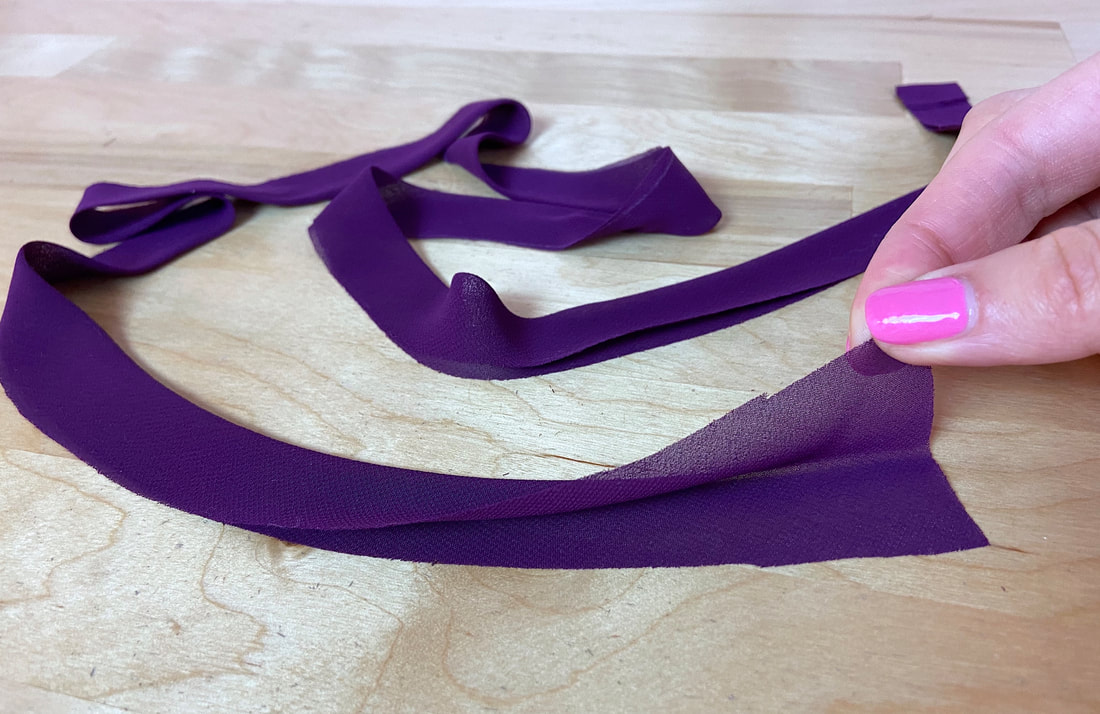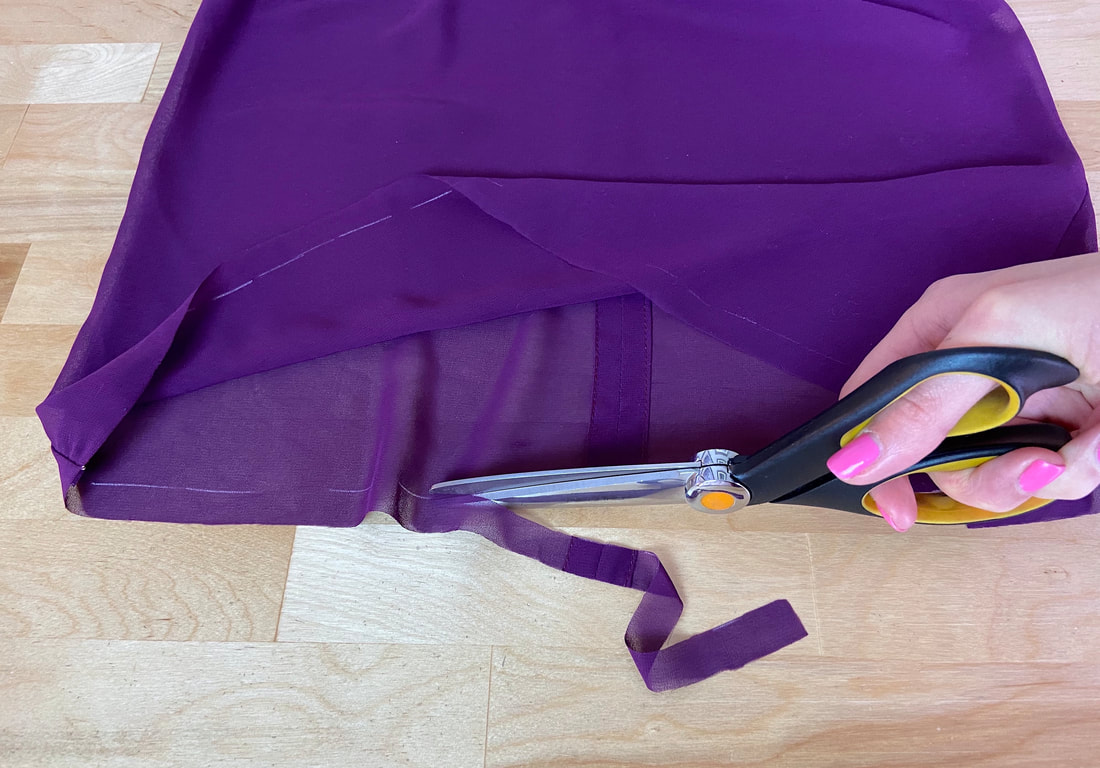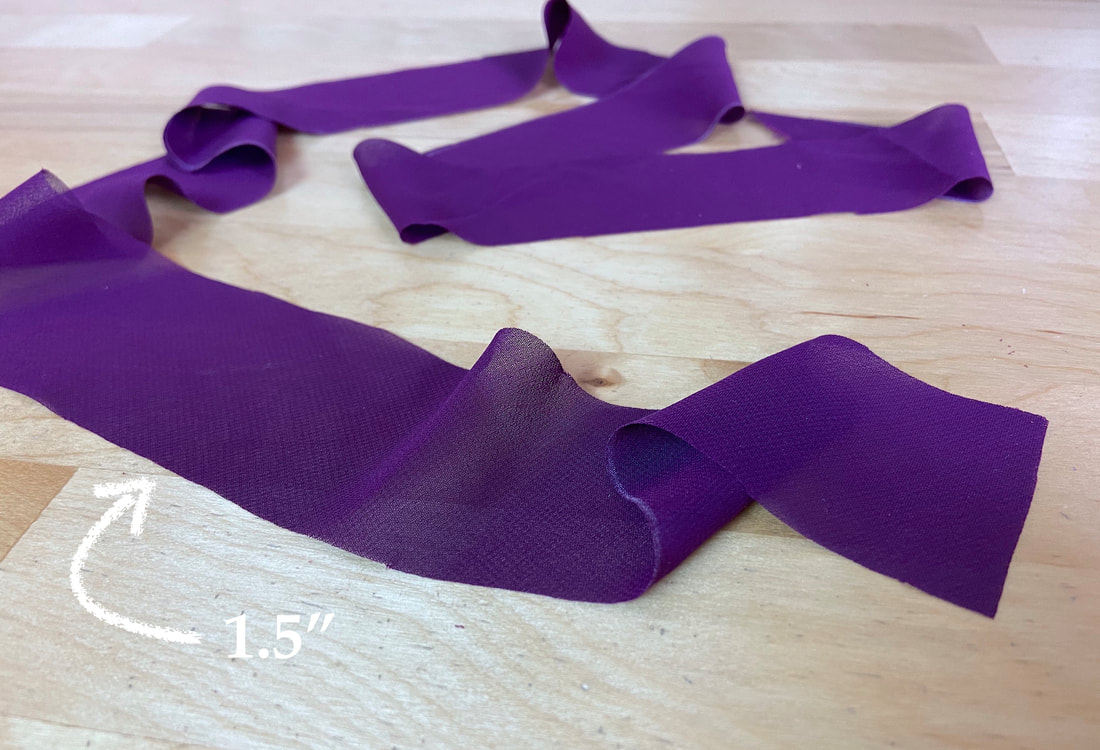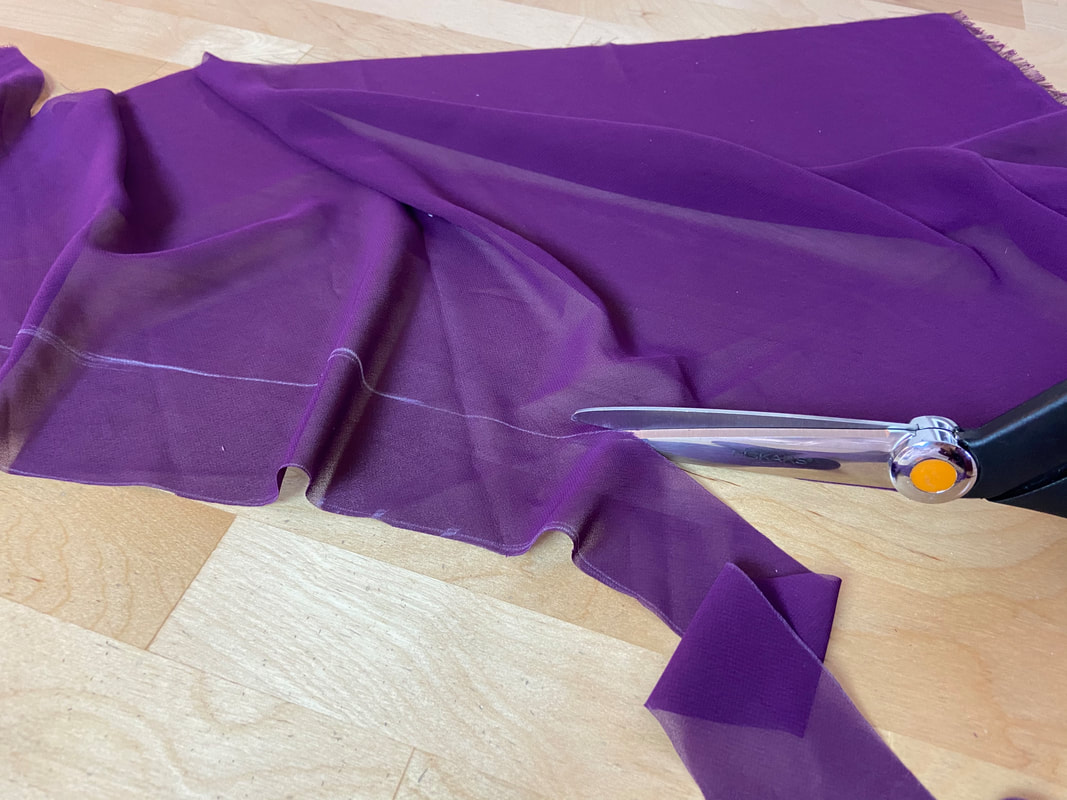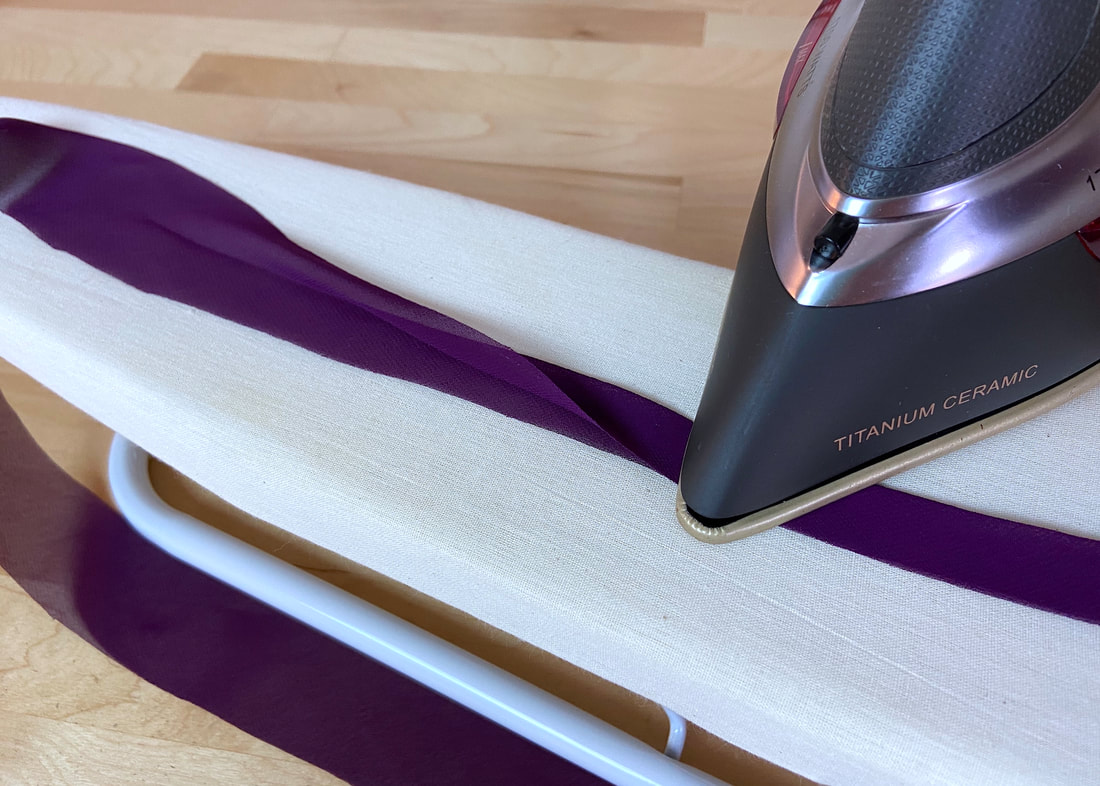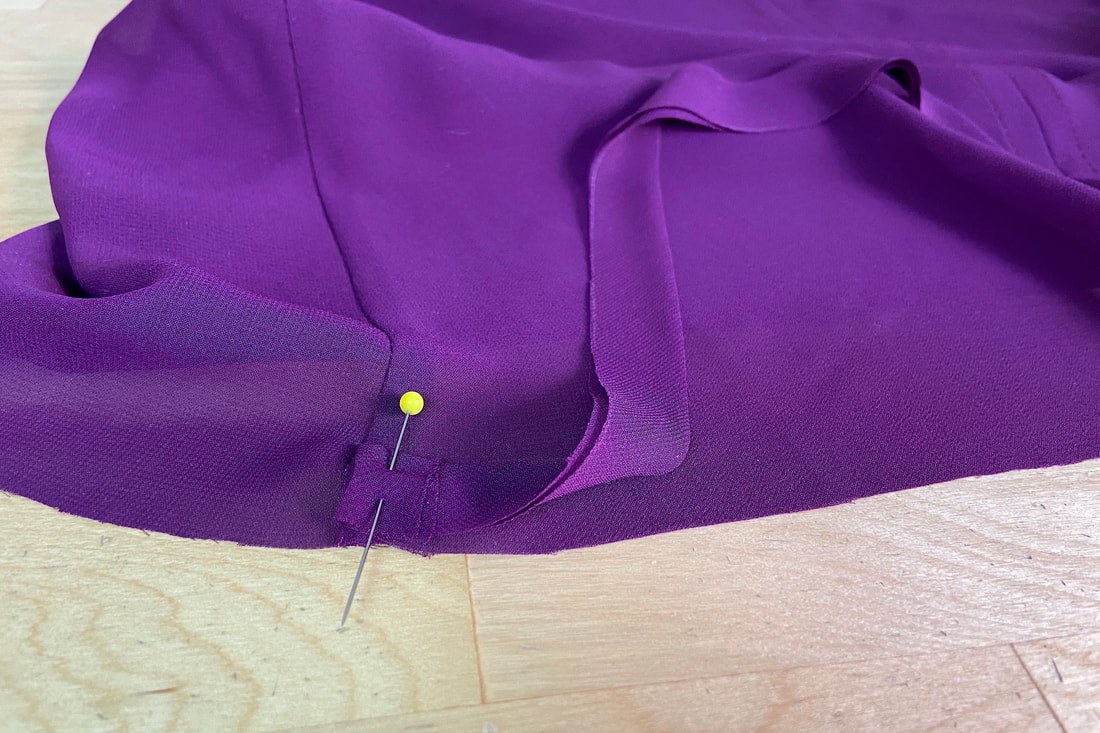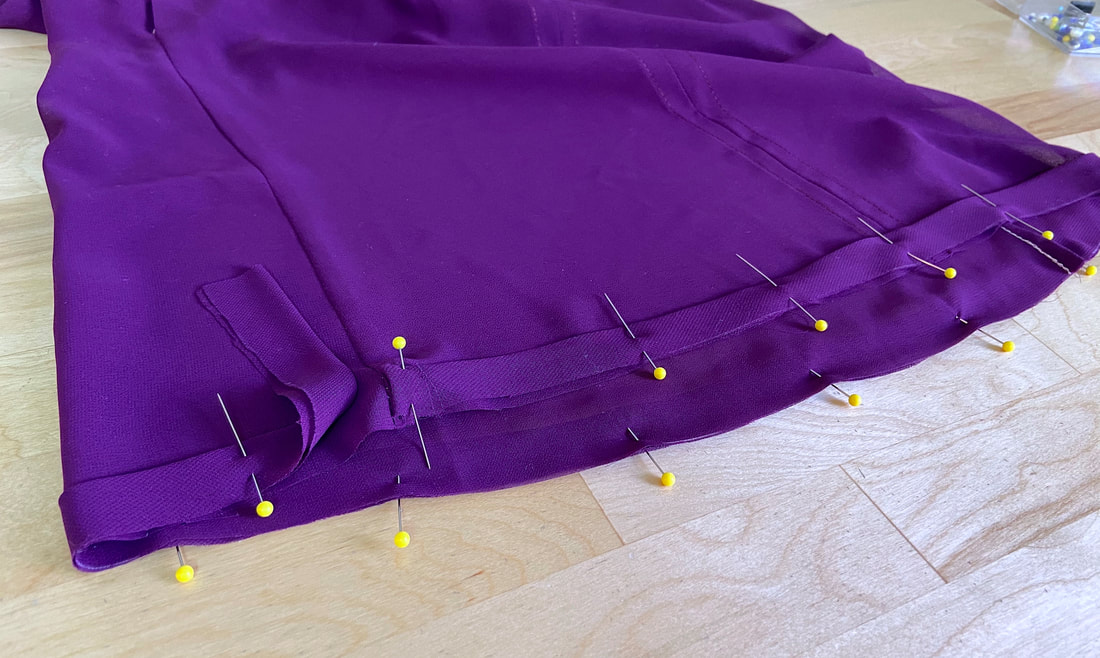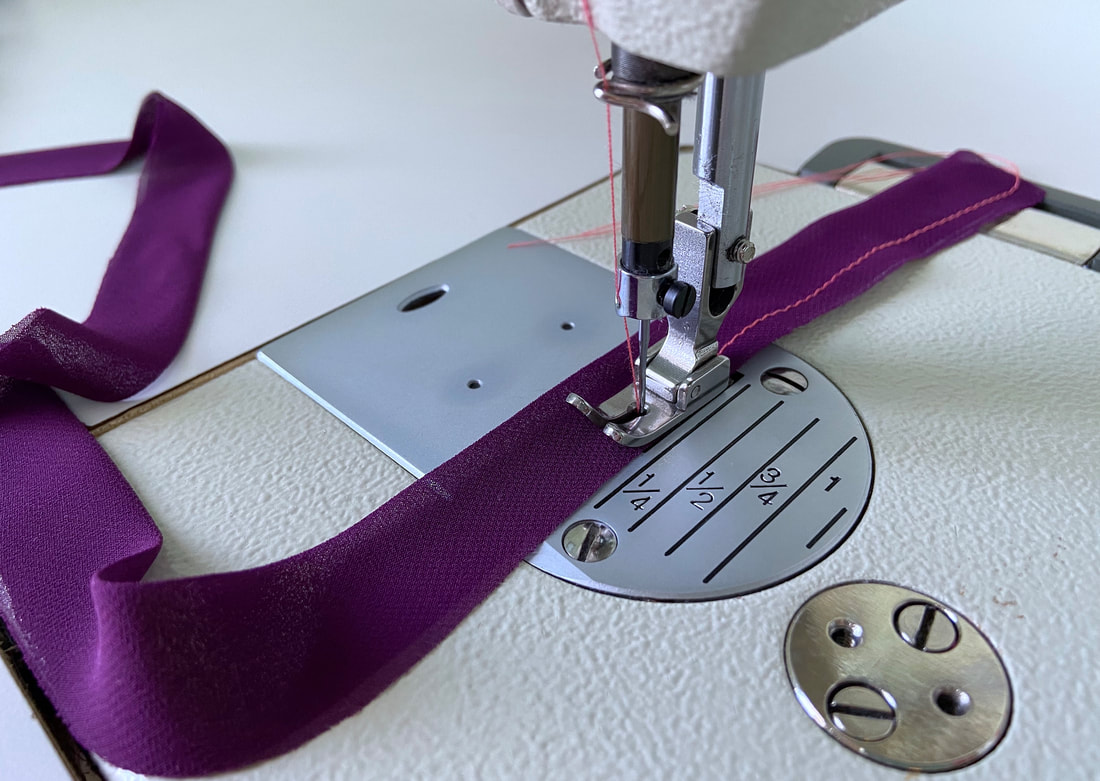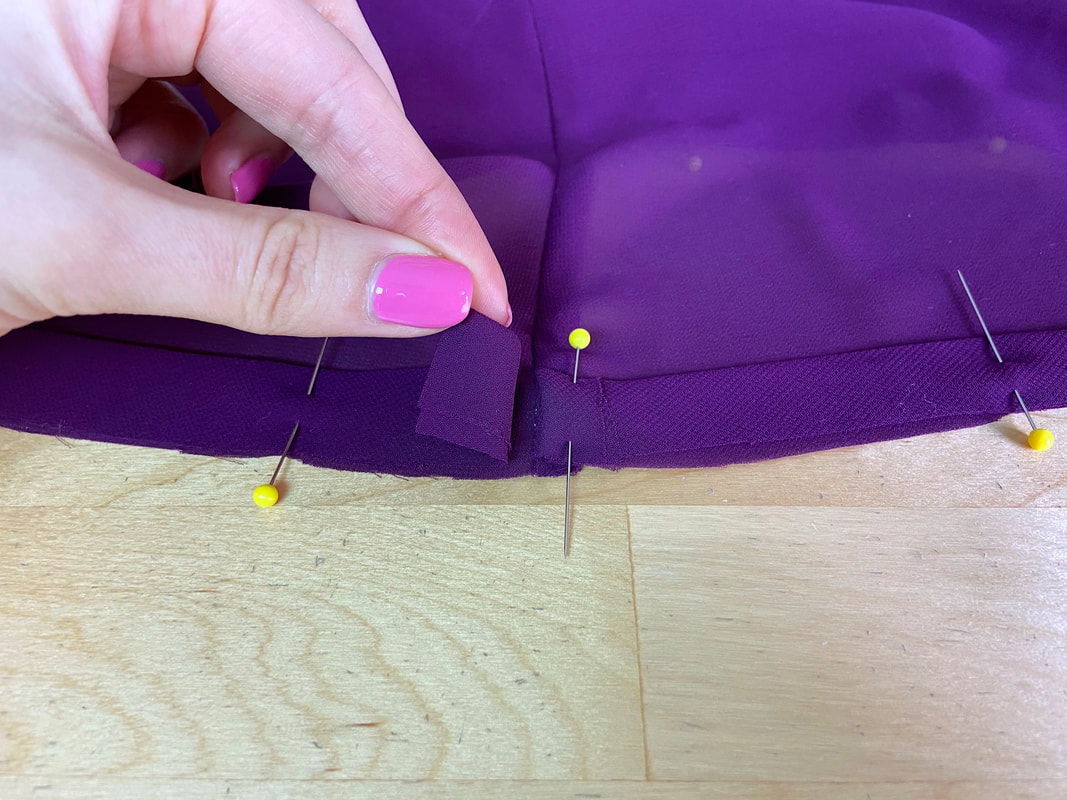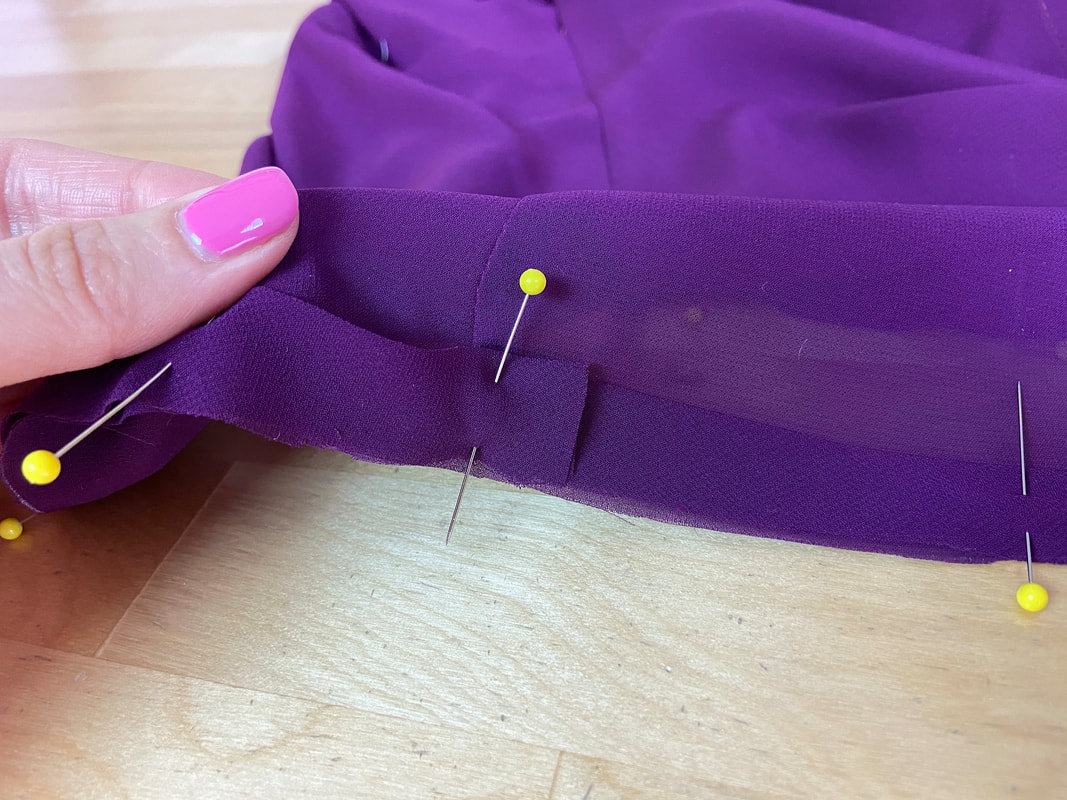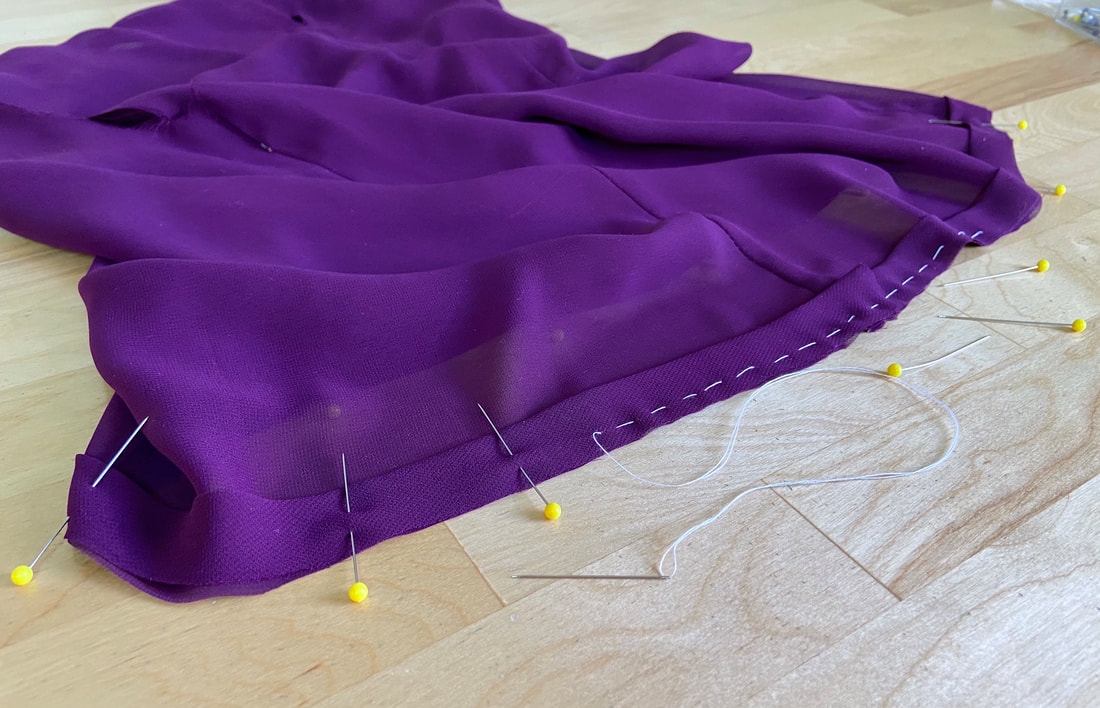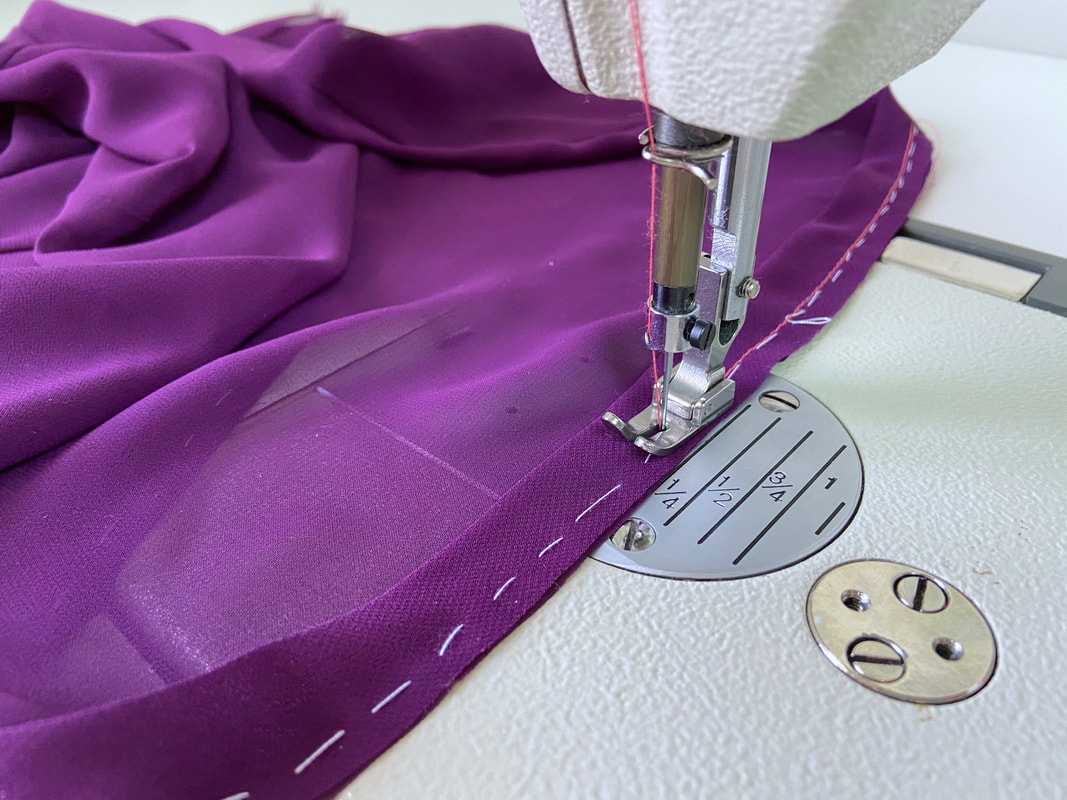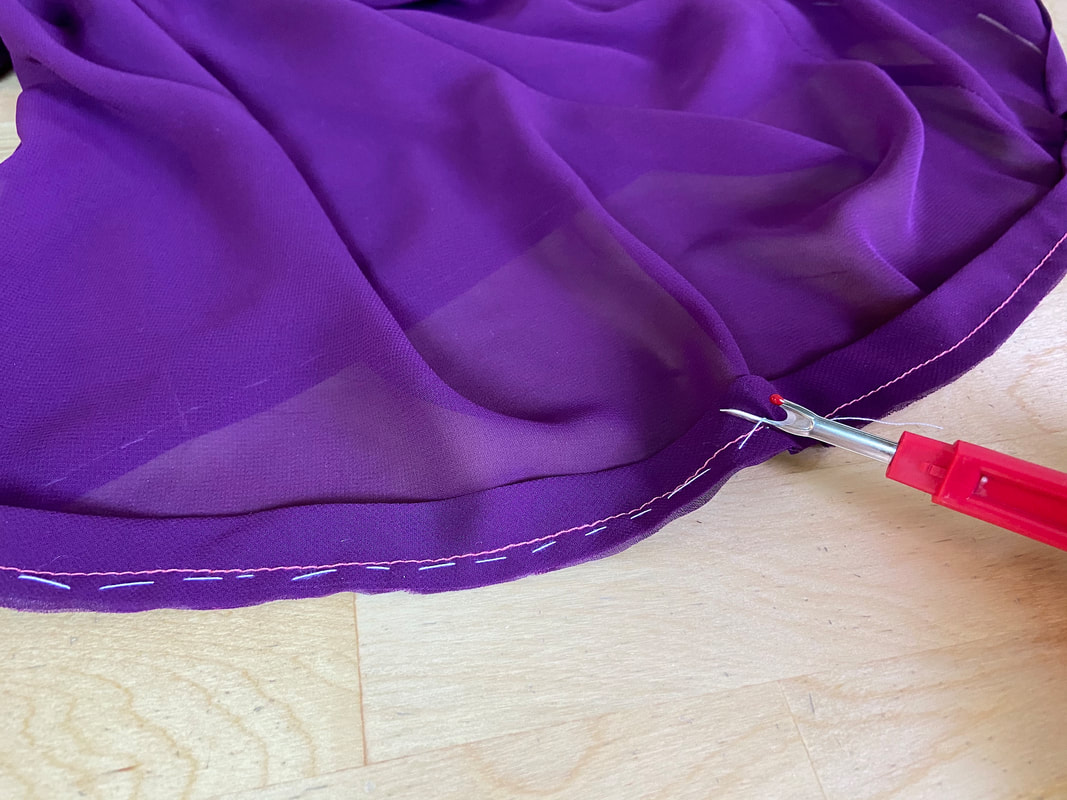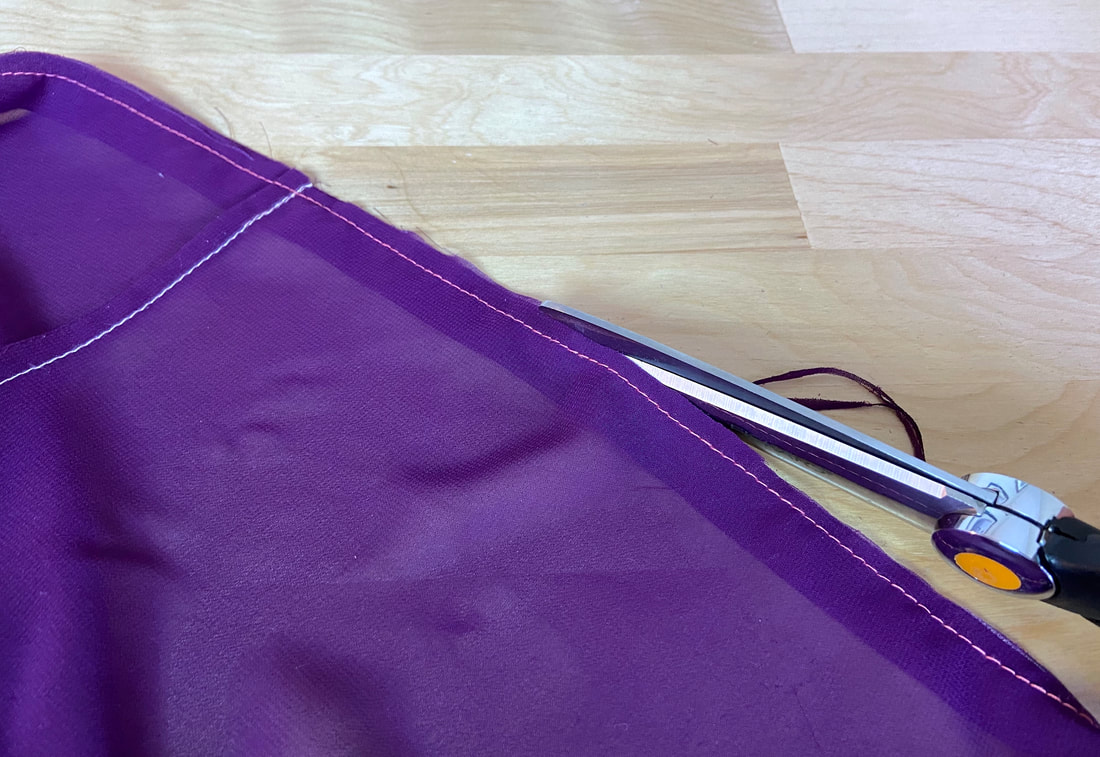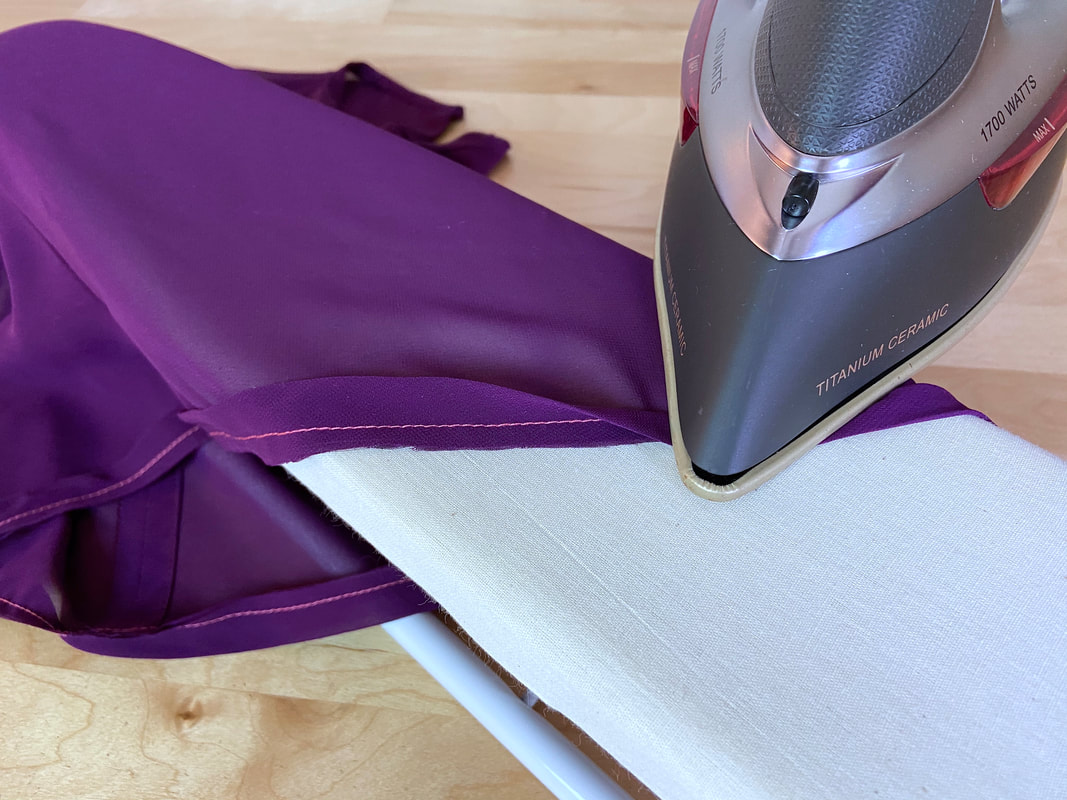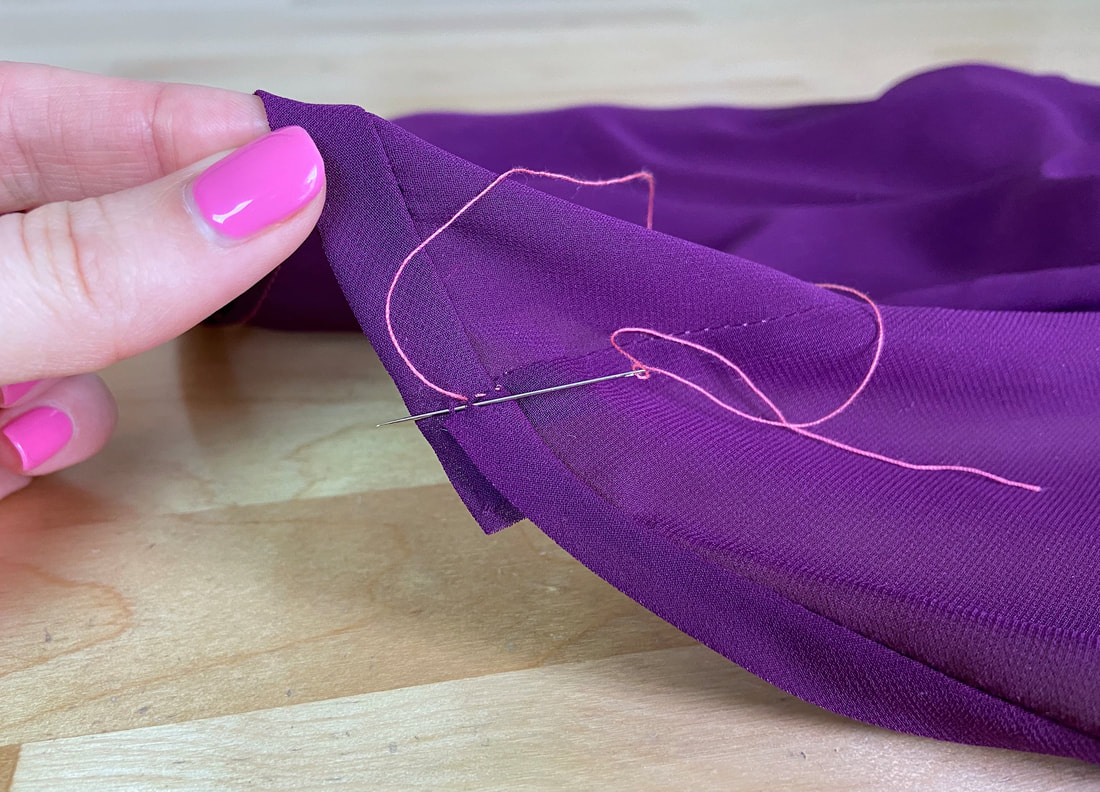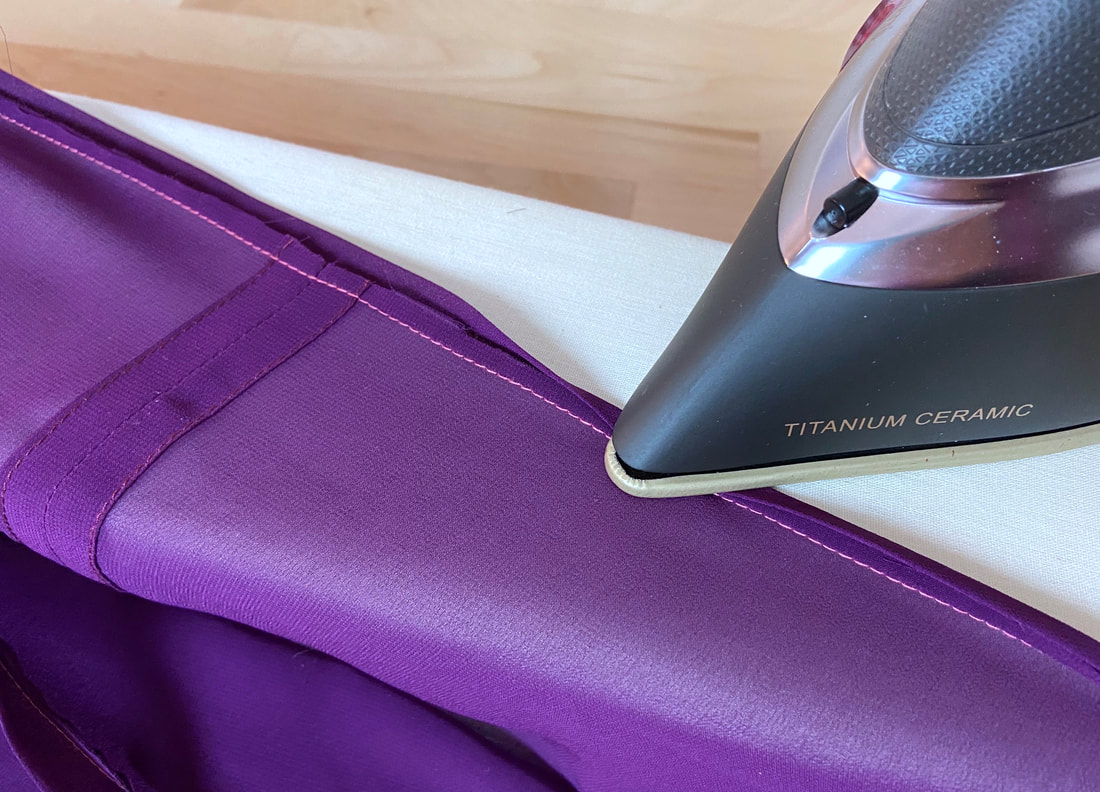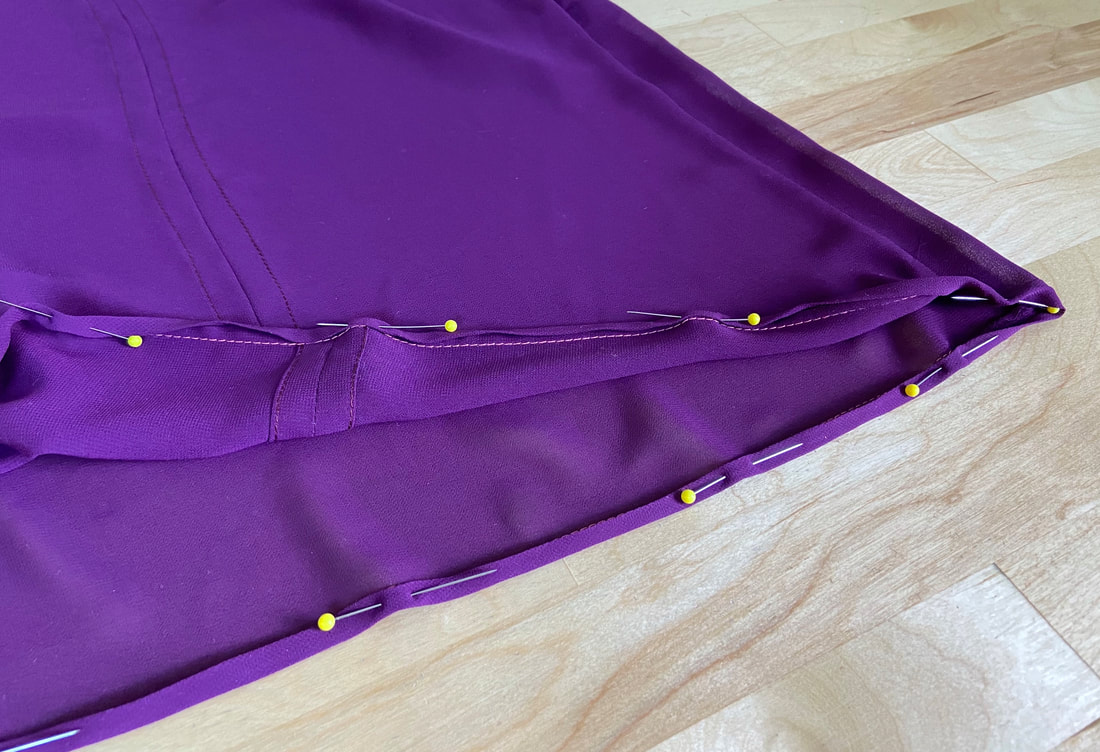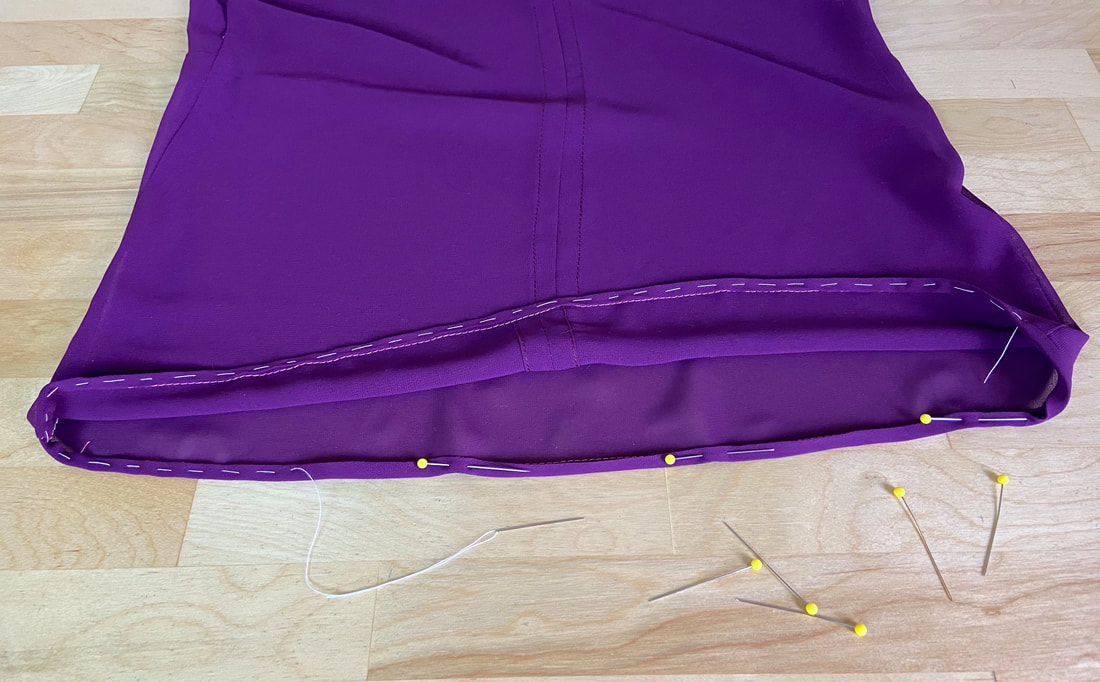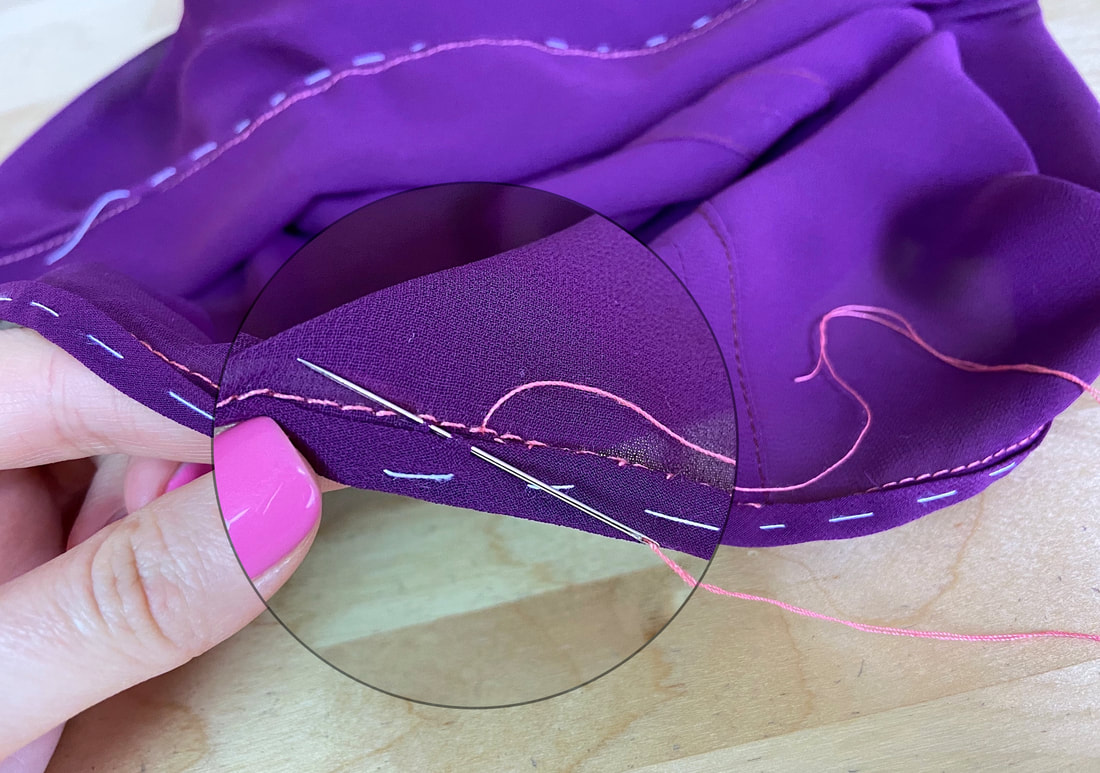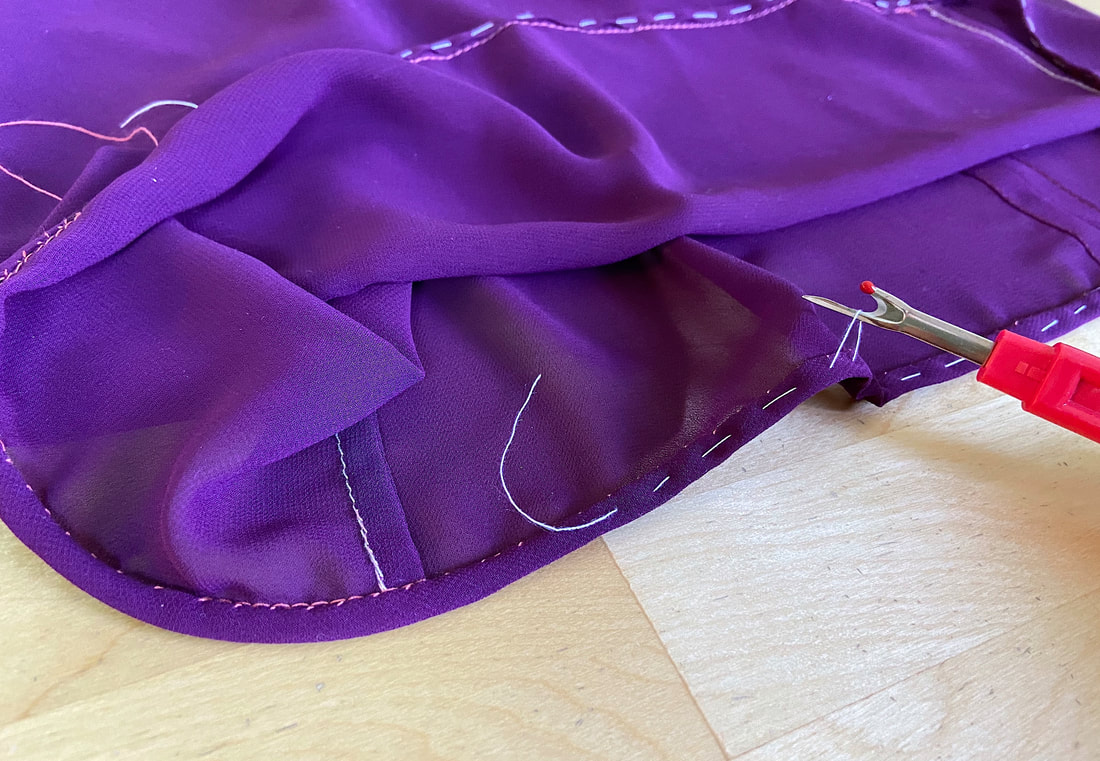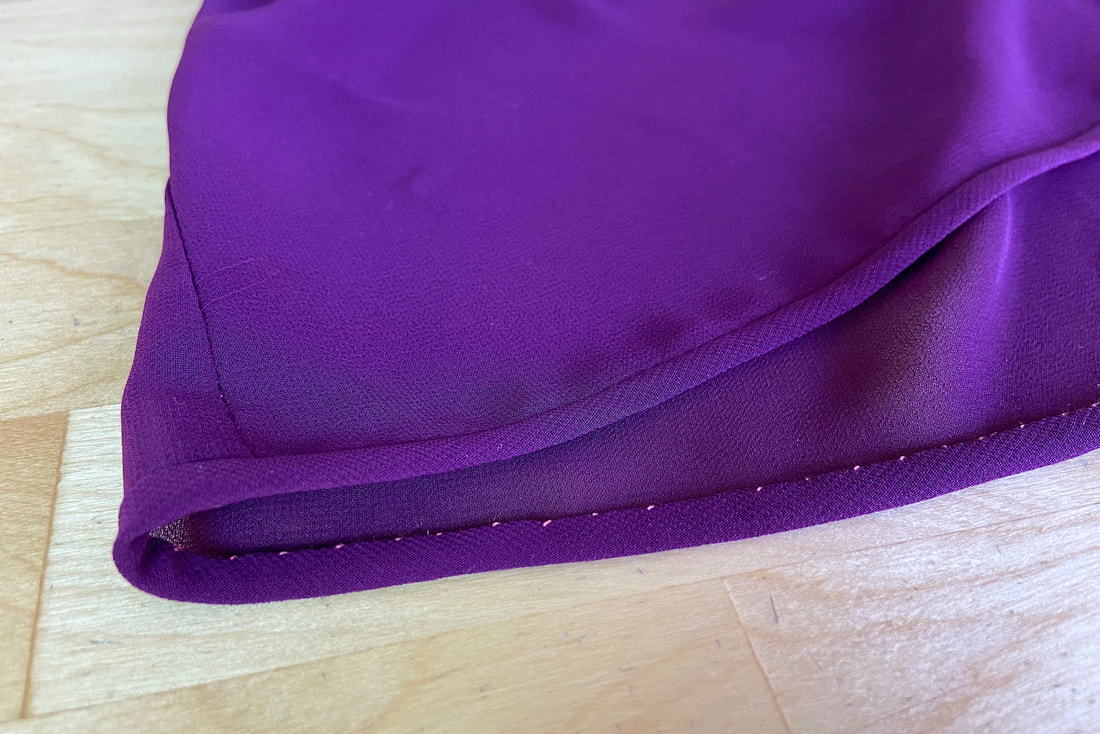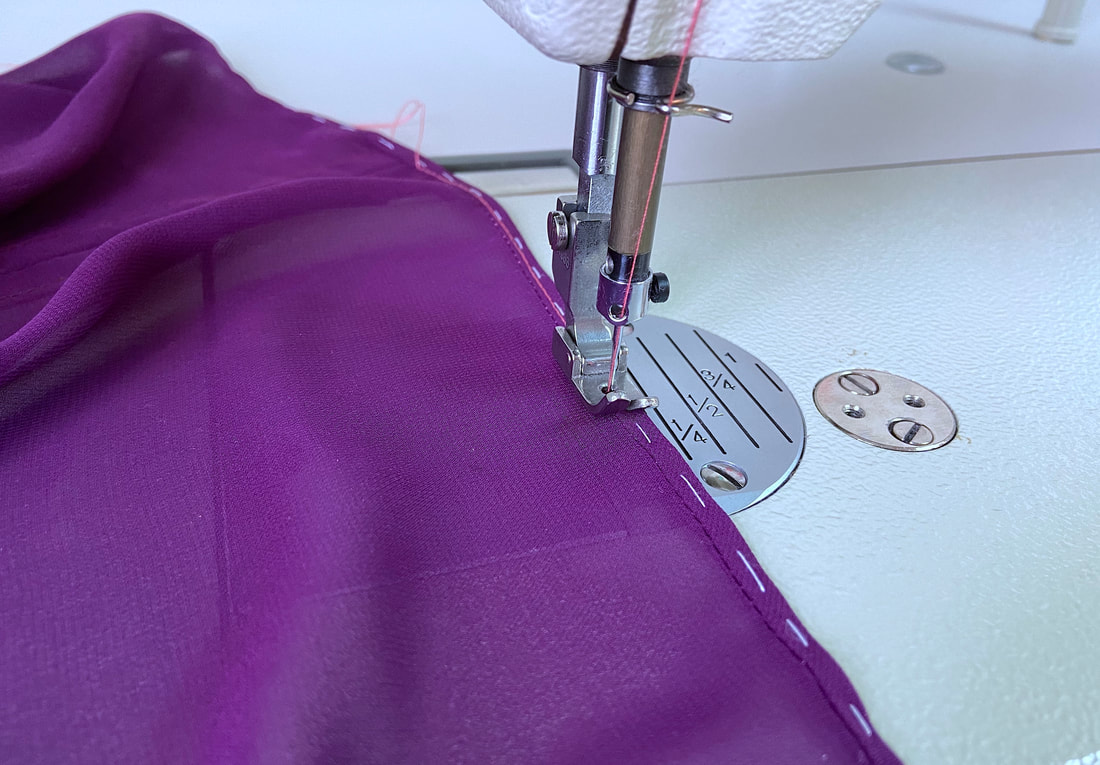A double layer binding is used on sheers and very lightweight fabrics.
Due to the double fabric layers, this finish may be too bulky if used with thick, textured fabrics. Since this is an exposed bound finish, trim the hem allowance down to the hemline as shown above. The finished hemline will correspond to the bottom cut edge.
1. Determine your finished binding's final width and multiply this measurement by 6 - this will be the width of the initial bias strip. In this tutorial, the final binding will be ¼” thus the initial bias strip will be 1 ½”.
2. Use the steps in this tutorial to measure, mark, and cut the bias binding strips: How To Sew Continuous Bias Binding
Use the continuous binding technique or sew individual strips together to achieve a length that will cover the entire hem edge.
3. Once cut and prepared, fold the bias binding strip lengthwise down the middle with wrong sides touching. Iron to crease the center fold line.
4. Fold one of the ends of the folded bias strip in at ½” and working on the right side of the garment, align the fold with one of the garment’s seams.
Match the lengthwise cut edges of the binding to the raw edge of the hem and insert pins horizontally to secure the layers together.
Note: If you find that the folded bias strip layers keep slipping away from each other, stitch them together at 1/8” seam allowance before attaching the folded binding to the garment’s hem.
5. When arriving at the starting fold, overlap the ends of the binding strip by about ½” and trim the excess.
Hand baste the double layer biding to the garment edge for extra stability if needed.
6. Stitch the hem and binding edges together at a distance equaling the final binding width (1/4” in this tutorial).
Once stitched, remove the hand basting and trim the seam allowance in areas where you feel it is too bulky.
7. Iron the binding layers and seam allowances away from the garment as shown.
In this position, the folded end of the binding (starting point) will overlap the cut end to enclose it. Blind stitch the folded end to the binding layer underneath to connect the two ends. Keep in mind that the fold should be perfectly in line with the garment's seam.
8. Next, bring the folded edge of the binding over the hem edge such that the fold aligns with the existing stitch and encloses all fabric raw edges. Iron to crease this final fold.
Insert pins and hand baste to keep the double layer binding in this position.
9. On the wrong side of the hemline, slipstitch the inner binding fold to the wrong side of the garment- follow the existing stitch as guide.
Learn how to slipstitch by following the steps in this tutorial:
Once complete, remove the hand basting and iron the finished application for a smooth, professional finish.
You can also topstitch the double fold binding from the right side of the garment as shown above.
A hand-applied invisible finish however, is considered higher quality and more appropriate for lightweight sheer fabrics.

